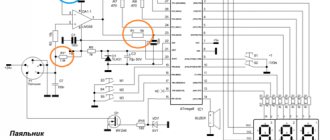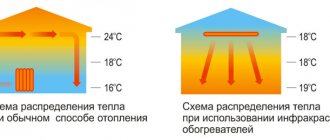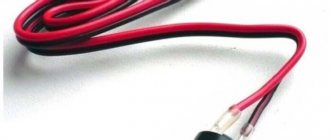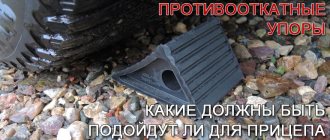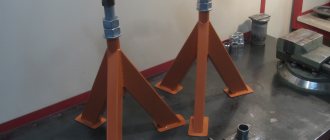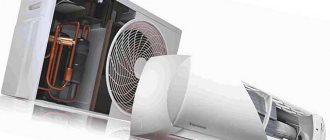I apologize in advance for the jackal photos, but what are they rich in, and what came to hand at one in the morning before work.
Having joined the fuchai 213 box mod recovery environment, I realized that although it is possible to dismantle fetas and shimki with a soldering iron, it is quite difficult.
So the idea arose to assemble a soldering (and on the edge, usual for heat shrinking tubes and bottles, soldering plastics) hair dryer.
The power supply from the laptop, generously customized by a friend, seemed to me to be a very suitable power supply, 20V 4.5A = 90 watts.
After experimenting with different cross-sections of kanthal, I chose 0.4, because it heated up to red-yellow when winding, consuming those same 4.5 amperes. Power supply specifications are usually written with a reserve, so I wasn’t afraid to push the maximum declared power.
The wire with the end of the spiral is fixed with a screw and washers for rigidity and contact.
The Chinese regulator, supposedly rated at 8 amps at 24 volts, died very quickly, so everything is connected directly to the power supply.
Impeller for 3D printer 24 volt
Using cold welding, I formed a thread for the body of the flashlight, and a hole was drilled in it for the wire outlet from the heater.
The plug from the flashlight, where the button was, was drilled out to fit the housing from the battery into it. The nozzle is made of light fire on the nipple of a car/bicycle wheel. It is all metal and maintains temperature.
A sheet of mica, generously sent by the Chinese for 40 rubles per piece of 10*15 cm, was cut to the size of the tube and many notches were made with a knife to roll it into a tube.
The base for the spiral was made from the same mica; the notches were made with a diamond wheel on a Dremel, because I got tired of notching with a knife. very efficient and smooth!
The yellow wire is simply wound around the nut to make contact with ground.
The second end of the spiral is hammered behind a mica tube for the sake of contact with the metal of the tube from the egoshka.
These connections were made as amateurishly as possible, because this is more of an experiment, and I followed the simple path, without coming up with anything easier to implement.
And all this stuff is simply connected through a switch directly to the power supply wire.
A supply of wires has been made for the heater for servicing the heater.
The flashlight body does not heat up at all! It is cooled by an air flow, and part of the tube with the heater is placed outside it.
The focus has completely gone crazy, and the camera turns red or yellow into the glow of a supernova.
Efficiency: more than visible in the photo. Even a mikruha with a soldered belly was removed in 10 seconds.
I didn’t apply flux, I didn’t dilute the solder!
Overheating of parts: not noticed. The same micro-USB that can be melted was not damaged at all!
Cost: specifically, only mica was purchased for 40 rubles, a fan for a buck, a power supply was almost a freebie, the rest was from junk stocks.
Bottom line: to be honest, I didn’t expect anything really useful from this project, especially with such a small spiral, because when I first removed the microscope, I simply screamed with joy.
I think that I will need it more than once not only for repairing box mods, but also for other minor electronics repairs.
Possible alternatives/upgrades: take a power supply from a PC, it has many more amperes on the 12V line, attach PWM, install a thermocouple.
But, of course, I won’t do this. Friendly.zhpg
Source: pikabu.ru
Homemade hair dryer for soldering small parts
Due to the improvement of assembly technologies for various types of products assembled from small metal parts (electronic microcircuits), their manual soldering is causing more and more difficulties.
A homemade soldering gun will allow the operator to cope with the difficulties that arise in these situations without any special complications and eliminate the risks that arise.
So, with the help of a self-assembled soldering station, anyone can install and dismantle parts without the threat of damaging fragile electronic elements located near the soldering site. One of the possible solutions to this problem allows you to make a hot air gun from a soldering iron, which is available in the household kit of any home craftsman.
Principle of operation
The operating principle of a typical soldering station with a hair dryer is quite simple and is as follows.
The air accelerated by a fan or compressor is pumped into a special channel made in the form of a tube with an electric spiral. Passing through this channel, the flow is heated to the required temperature (from 100 to 800 degrees) and immediately enters a plastic calibrated nozzle, which directs the hot jet onto the workpiece.
In most industrial models of soldering guns, the main parameters of the heated jet (its temperature, direction of movement, and power) can be adjusted within certain limits.
Operating principle of a ceramic heater
A ceramic car cigarette lighter heater contains a heating element that instantly heats the air, and the presence of a built-in powerful fan allows this warm air to be evenly distributed throughout the cabin.
The device connects to the vehicle's electrical system through the cigarette lighter socket and operates on 12 V.
Typically, heater manufacturers provide a 1-year warranty, but the device will serve you much longer, since the ceramic heating element does not oxidize, so the functions of the device are not impaired.
Turbine and compressor type
The circuit diagram of a DIY soldering station can be presented in the form of a main module and a terminal device (thermal hair dryer) that provides heating of the air in the soldering zone.
Before its manufacture, you need to know that according to the method of forming a forced air flow, such devices are divided into turbine and compressor type soldering devices.
In turbine units, air is supplied to the treatment zone by means of a small electric motor with a fan built directly into the hair dryer body. In products of the second class, the air flow is formed using a special compressor located in the main module (controller for a soldering gun).
When choosing the required type of station for soldering small parts, one usually proceeds from an assessment of the following multidirectional factors:
- fan soldering stations are capable of generating a more powerful air flow, which is an obvious advantage of the hair dryer built into them. However, the flow created with their help hardly passes through nozzles that are too narrow;
- compressor hair dryers, on the contrary, are more effective when working with relatively narrow nozzles used when soldering parts located in hard-to-reach places.
The choice of the optimal version of a soldering gun capable of working with a given set of plastic nozzles is carried out taking into account the specific conditions of its operation.
How to choose a hair dryer for travel
A good travel hair dryer is characterized by being small in size, ergonomic and compact. A useful feature for a folding unit is that it supports operation from different network voltages, not only from the standard 220 V, which will make it possible to use it in transport. It will be useful to have an adapter for European sockets; this function is important when traveling abroad. When choosing a device, pay attention to its size. The dimensions of a travel hair dryer may be small, but the design may not have a folding handle. Therefore, the first thing you need to pay attention to when purchasing:
Cooler based
The easiest way to make a hairdryer with your own hands at home is to use the turbine principle of air injection, implemented using any small-sized fan suitable for these purposes.
A soldering hair dryer can be made with your own hands using the cooler that comes with the power supply of any desktop computer.
In this case, the fan is built into the handle of a thermal element made of a fireproof tube with an electric spiral, passing through which the air will heat up and then enter the soldering zone.
The outer part of the soldering gun body must be made airtight, which eliminates the possibility of air being sucked into the surrounding space. To assemble the heater, you will need nichrome wire wound in a spiral on a ceramic tube.
The total length of the winding is selected so that the resistance of the entire wire segment is about 70-90 Ohms.
The individual turns of the spiral wound on a ceramic base should be located at some distance from one another. For safe operation of the heater, this removal should be about 1-2 mm.
Technical capabilities of stoves from the cigarette lighter
A regular car heater can warm up a car's interior in about 15-20 minutes. In this case, it will begin to work only after the engine has completely warmed up . If you decide to purchase a ceramic car heater that will operate from a cigarette lighter, then the waiting time for the interior to warm up can be reduced by 3-4 times. Of course, you should immediately draw your attention to the fact that the voltage in your car must be at least 12 V.
Another advantage of car cigarette lighter heaters is their versatility. They can be used in salons:
In this case, it is possible to select a heater with the required wire length.
From a soldering iron and a dropper
To make a soldered hair dryer with your own hands, you can use a simple soldering iron with the protective casing removed from it.
When taking it as the basis for a future heater, it is necessary to modify the design, which consists of the following:
- First, the tip is removed from the working part of the soldering iron, after which the mica tube with the nichrome winding placed underneath it is completely pulled out of the wooden handle-holder.
- Then the power wires suitable for the heating element are disconnected and also pulled out of the wooden holder, but from the other side.
- After this, a hole of the required size is drilled in the side of the handle, into which the previously disconnected network wire is threaded (towards the working part).
- At the next step of making a soldering gun, take a dropper, from which the tip is cut off in the area where the rubber skirt is located. Then the exposed part of the tube is inserted into the network hole of the wooden handle.
- Next, the rubberized seal (skirt) of the dropper is pressed with force against the end part of the holder, ensuring reliable sealing of the docking area.
- Upon completion of these actions, the ends of the drawn power wire are reconnected to the nichrome winding and reliably insulated.
- A piece of telescopic antenna of suitable diameter is inserted into the hole where the soldering iron tip was previously located and carefully clamped with a locking screw.
The tightness of the inlet hole in the handle will ensure effective inflation with cold air coming from the compressor station.
At the final stage of assembling the soldering gun, you should return the heating tube with the nichrome winding to its place, having previously wrapped it with several layers of aluminum foil.
Then the heater prepared in this way is recessed into a wooden handle and securely fixed using a flexible copper wire wound along the entire length of the protective coating.
How does he work
So, the technological operation of the device. In its action it resembles the work of thermal film. The heat it produces is not used to heat the air. The heat generated by the device is transferred to the objects it is directed at. In other words, objects first begin to heat up, and only then give up their energy to the air. Usually such a device is not turned on in vain. If it is in working condition, then it is intended for something. Its energy consumption is very minimal. Before you make a heater for your car, you will need to find spare parts that can be purchased on the radio market.
Self-repair of industrial designs
Before repairing a soldering gun, first of all, you need to familiarize yourself with the connection diagram of the fan and heater to the electrical network (its other name is pinout).
Knowledge of this circuit allows you to check the correctness of the power supply to each of the main elements of the thermal module and make sure that they are in good condition.
Direct repair of a non-working soldering device comes down to replacing failed or damaged parts, which can be detected by the presence of characteristic burn marks.
When operating a soldering gun, sudden changes in operating modes (heater temperature jumps, in particular) should be avoided. In addition, it is strictly forbidden to touch the working thermal element, as well as the replaceable nozzles.
Otherwise, the operator risks serious skin burns from the hot air. Changing plastic attachments is allowed only after the soldering gun has been completely turned off and all its working parts have cooled down.
Source: svaring.com
Gas interior heater
It should be noted that diesel and gasoline autonomous interior heaters have a serious competitor - a gas car interior heater that uses natural gas or propane-butane as fuel. It is worth noting the autonomous interior heating devices of the German developer - Trumatic, whose products are distinguished by:
- the quietest, almost silent operating mode,
- high efficiency – 97%;
- complete absence of the smell of combustion products characteristic of diesel fuel.
Gasoline autonomous heaters are used mainly for use in conditions of low temperatures and severe frosts in the northern climate zone.
Soldering hair dryer from a regular soldering iron (life hack)
In this instruction you will learn how to make a soldering gun with your own hands using a very ordinary soldering iron. Of course, there is no temperature controller or other bells and whistles, but the homemade product can be assembled quickly, simply at minimal cost.
Materials and tools used by the author:
List of materials:
— soldering iron 60-150 Watt; — homemade pump (or purchased); - self-adhesive foil; - rubber hose; — metal tube (nozzle); - electrical tape.
List of tools:
- screwdriver; - scissors; - skillful hands.
Soldering gun manufacturing process:
Step one. Disassembling the soldering iron
First of all, you will need to take a soldering iron and remove the tip from it. Usually you need to unscrew 2 screws to do this.
Step five. How does the pump work?
The author’s pump is homemade, but today you can buy a ready-made one. The pump is very simple to make; you will need a small motor, a plastic gear, a bottle cap, a syringe and other little things. Thanks to the crank, the motor makes the membrane work; it is made from a balloon. The syringe has homemade valves, one for inlet and one for outlet. As a result, the pump works.
Step six. Connect and test
You can connect the pump to a soldering iron and try soldering. The author’s soldering gun works quite well, easily melting tin, shrinking heat-shrinkable tubing, and so on. The harder the pump works, the lower the temperature of the soldering iron will be, since the air will not have time to warm up. Well, with a weak flow, the air will be hot, but the flow may be weak. Here it is necessary to select the operating mode experimentally. That's it, the soldering iron is ready, good luck!
Source: usamodelkina.ru
Autonomous devices
SITITEK Termolux-200 USB – 4-in-1 battery model
A small interior heater, powered by a battery, can, if desired, be connected to a 12 V car network - a meter-long cord with a plug for the cigarette lighter is included. On the body there was a place not only for the deflector grilles, but also for a small LCD screen, as well as LED indicators notifying about the operating mode of the device. When heating, it blows out warm air with a temperature of +37 °C.
TRUMA Vario Heat Eco – efficient gas heater
Quite a serious device designed to warm up the spacious interiors of passenger and truck cars, caravans and motorhomes. The heater operates in two thermal modes: 1.3 and 2.8 kW, and is “powered” by liquefied propane-butane from cylinders with a pressure of 30 mbar (usually through a gas reducer).
A caring car enthusiast will always prepare for the winter season in advance - change tires, spark plugs, treat locks with silicone. In addition, no one minds moving from a warm apartment to a cold car and quickly heating up the interior. To do this, it is enough to strengthen the standard heating system by installing an additional heat source.
Video for those who don't have time to read
If you don’t have time to read tedious texts, go straight to the video. It shows the manufacturing process of individual parts, the assembly process, and the final tests of the homemade product. For people with disabilities, subtitles will now be added to each video.
Attention! The article omitted a description of some aspects of making a hair dryer, since it is present in the video report, and vice versa.
In the past, for all sorts of “thermal technologies” (of course, except for soldering and dismantling radio components), I used a small lighter with a nozzle. But a gas burner, in terms of producing a hot stream of air, has a number of disadvantages. With its help, it is impossible to smoothly regulate the temperature, the size of the torch depends on the amount of gas in the tank, an open flame can cause a fire, and finally, you need to buy gas in cans.
So, it was decided to make a small hairdryer from all sorts of rubbish that can be found in the bins of a DIYer. An additional incentive to produce this device was the price of a factory-made hair dryer, which starts at about $30.
I note that during the assembly and testing of the subject, I built another, still speculative, model of a hair dryer with higher power. So, if you need a more serious unit, stay tuned for new publications.
Use of additional heating in cars
Cases when you will definitely need a car heater from a cigarette lighter
A ceramic car interior heater is not needed when:
Another important point that you should remember: cigarette lighter heaters will not replace a standard stove; they have a completely different purpose. You will be convinced of the usefulness of the heater if you use it for its intended purpose.
Each car owner decides independently whether to buy a heater for the car or not. I think it’s always interesting to try something modern and new.
Main parts and materials
I've had this fan lying around idle for a while now. These 40mm fans used to be widely used in PC 486 and video cards.
This unit will require minimal modification. You will need to re-insert the wire into the attachment point.
I didn’t have a tube of a suitable diameter for the heater air duct, so I borrowed it from a ten-watt resistor type C-5-5. To free the tube from the insides, I sawed off one of its rolled edges with a file.
Drawings of a homemade soldering gun
This is an assembly drawing of a soldering gun. I was too lazy to draw isometric projections, but you can see the soldering gun from all sides by watching the video posted at the beginning of the article.
And this drawing shows the attachment point for the electrical terminal block. The M3 screw securing the terminal block is isolated from the tin body using a small piece of cambric (polyvinyl chloride tube) and an M4 fiberglass washer. An M3 fiberglass washer is placed between the screw heads and the nylon handle of the hair dryer. This washer prevents heat transfer from the electrical terminal block to the hair dryer handle through the M3 screw.
A drawing of the body of a miniature soldering gun in A4 format and 300dpi resolution is located under the thumbnail. If you print it on a printer and stick it on a tin from a tin can, then you can easily make the most complex part of this homemade product.
Note to craftswomen
If desired, you can significantly speed up the drying process of paints and varnishes . A household hair dryer will not be able to compete with a construction hair dryer in performance, but it is quite suitable for drying small surfaces.
During the drying process, the main thing is not to overdo it - some paints or varnishes may warp under the influence of temperatures.
In addition, if the hair dryer raises dust or small crumbs during operation, there will be more harm than good. All the dust will settle on the paint and stick to it, so before turning on the device, you should make sure that the area around the drying area is relatively clean.
By the way, old paint and varnish come off well when exposed to strong heat, so if you need to restore old furniture but don’t want to use a remover, a hairdryer can help.
Nail polish is not afraid of exposure to temperatures, and its drying time when treated with warm air is noticeably reduced . There is no point in telling beauty salon workers about this miraculous property, but if someone sets up a manicure salon at home, then the idea can be useful.
Small details
Let's look under the fan to see how the coil is connected to the cable. The design turned out to be very repairable. It is enough to unscrew just a few screws to replace the spiral, for example, in order to adjust the resistance of the spiral to the voltage of an existing power source.
I soldered the petals to the heater cable, but it was possible to roll the ends of the conductors into rings and tin them, just like we do when we change a collapsible power plug.
Most of the things I intend to do with a soldering iron require both hands free. Therefore, I made this stand for fixing the hair dryer on the table. A clamp with an open perimeter allows you to securely hold the hair dryer and, if necessary, easily remove it from the stand.
This is how the soldering gun turned out.
Installation process
The process of installing an autonomous Eberspacher heating system is quite labor-intensive and complex. During installation, the heater is connected to the vehicle fuel supply system, and the source of electricity in this case is the vehicle's electrical circuit. At this stage of work, it is very important to comply with all recommendations and rules established by the heating system manufacturer. Incorrect connection increases the likelihood of equipment failure, which can cause damage to the vehicle.
Also of great importance for the installation of an Eberspacher autonomous heater is the correct selection of the installation location. It must be borne in mind that the heater must be mounted externally under the floor of the car, for which additional holes are made for laying the air intake channel and the exhaust pipeline.
The installation location of the Eberspacher Hudronic heater should be located in the area of the engine compartment, since systems of this type are integrated into the coolant circulation line. The air enters the heat exchanger and is heated, after which it is directed through the air ducts back to the vehicle interior. The required level of comfort when controlling an autonomous heating system is achieved through radio remote control and a programmable timer.
Technical data
The hair dryer fan is powered from a 12 Volt DC source.
The heating element of the hair dryer is powered by an alternating current source of 0...12 Volts. With its help, you can change the temperature of the air flow, from room temperature to 600°C.
Mini-hair dryer parameters at temperature limits.
The diameter of the nichrome wire of the heating element spiral is 1.2 mm.
The heater supply voltage is 9 Volts.
The heater current is 11 Amperes.
Heater power - 100 Watt.
Air flow temperature - 600°C.
The time it takes for the hair dryer to reach the selected temperature mode is 1 minute.
I didn’t make a special power supply for my hair dryer, so I have universal sources of different power at my disposal.
If you do not have a suitable power source, then you can adjust the resistance of the spiral to one of the output voltages of the ATX computer power supply or make the simplest power supply from the ballast of a burnt-out CFL (Compact Fluorescent Lamp). For a detailed description of the modification of the power supply based on CFLs, see here>>>
In the picture, a circuit of a switching power supply for a miniature soldering gun, assembled on the basis of a CFL ballast. Additional elements are highlighted in red. Pulse transformer TV2 has two secondary windings. One of them powers the fan, and the other powers the heater coil. To adjust the temperature of the coil, switch S1 is used.
Car interior air heater
Is a leader in choosing professional drivers. The cost of purchasing and installing an autonomous air heater is approximately half the cost of fuel used to warm up the interior during a year of operation of the tractor.
The structure and design of the air-powered autonomous interior heater is, in general terms, similar to a primitive starting heater. Unlike the latter, an autonomous heater uses air for heating and is installed directly in the cabin or interior of the car.
The heat generated by the combustion of a small amount of fuel in the combustion chamber is transferred through an aluminum heat exchanger to the air flow forced by a low-noise fan into the cabin. Combustion products are discharged through a metal heat-resistant hose outside the cabin. The fuel is stored in a tank, usually located on the rear wall of the tractor cab. A control panel and an air intake regulator are installed in the cabin. On average, an autonomous device consumes 200 ml of fuel per hour with a battery load of 40-50 W. Thermal power ranges from 2 to 7 kW/h.
Modern long-haul trucks and heavy construction equipment are equipped with a 24-volt diesel autonomous interior heater, which is due to the characteristics of the fuel used and the voltage of the on-board network. American tractors use the power supply voltage of passenger vehicles, so an autonomous 12-volt diesel interior heater is installed.
The most respected and respected diesel car interior heaters are Airtronic (Eberspacher) and Air Top ST (Webasto). German quality, trouble-free operation and convenient operation correspond to high product prices. Among the advantages of branded autonomous heaters:
- high build quality;
- availability of programmable operating modes;
- possibility of launching at a distance from the car of more than 1000 m.
Among the Russian models, it is worth mentioning Samara’s own development - the autonomous cabin heater Planar. At a low cost, it is unpretentious and reliable. It uses diesel fuel and is controlled manually from a remote control inside the car. The Planar-4D heater model, consuming 0.12-0.4 liters of diesel per hour, is capable of heating the interior of a bus with 30 seats.
About the heater temperature and the choice of material for its body
The operating temperature of the nichrome spiral should not exceed 1000°C. The temperature of a hot coil can be approximately determined by its color. The table shows temperatures in degrees Celsius.
This table shows the melting points of some metals.
As you can see, copper, brass or steel are best suited for making the heater body. But, copper and brass quickly oxidize at high temperatures. Therefore, it is better to choose steel or nickel-plated steel.
If you have defective lithium-ion batteries at your disposal, you can make a tube from the body of one of the cans. The housings of the cans of any lithium-ion batteries and lithium-ion batteries are made of stainless steel.
The picture shows a disassembled laptop battery. The diameter of the can body is 16mm, length – 65mm. How to disassemble a laptop battery is described and shown here>>>
And this photo shows a disassembled “EN-EL1” battery from Nikon cameras. Can diameter 14mm, length – 48mm.
The contents of lithium-ion battery cans and lithium-ion batteries are extremely toxic! Therefore, cans should be disassembled outdoors, and the extracted products should be sealed in a secure container and taken to a battery recycling point. Such items are usually available in large supermarkets and specialty stores.
Source: oldoctober.com
A simple DIY hair dryer
Everyone has long known about the purpose and technology of using a construction hair dryer, so we will not dwell on them. Stores offer a wide selection of such tools, but sometimes situations arise when you simply don’t have it at hand. It is in this case that some craftsmen are forced to resort to making homemade structures.
The general principles of operation and internal structure of a conventional hair dryer and its construction modification are the same. But that's where the similarities end.
The main reason is the difference in the temperature of the air that passes through the hair dryer. A regular model heats it up to 50-60 degrees Celsius. The construction device heats the air to 600-650 degrees.
The high operating temperature determines the use of heat-resistant materials for its manufacture.
To make a construction hairdryer with your own hands, you should abandon the idea of building it on the basis of a conventional model. All parts, including the body, will have to be redone.
The electrical connection diagram can be found on the Internet or copied by disassembling an old hair dryer.
The components you will need are nichrome wire, a small fan with a metal impeller, a piece of metal pipe and a power cord.
Work begins by making the working part from a piece of water pipe. Four or six triangular cuts are made at one end. The resulting petals are evenly bent inward, forming an air nozzle. The seams must be welded and carefully sanded.
Now we have to make the heating element. It should be slightly smaller than the diameter of the working pipe and not touch its walls. Heating spirals are made from nichrome wire by winding it around a thick nail.
The finished spiral needs to be wound on a ceramic or other heat-resistant base, for example, on mica plates, which can be borrowed from an old hair dryer. The closer the spiral turns are located to each other, the higher the air heating temperature will be. A switch and a power cord are soldered to the ends of the spiral.
The heating element is installed inside the working pipe, isolating it from the metal with asbestos or mica plates.
The working pipe with the heater is wrapped on the outside with sheet asbestos and attached to the handle with metal clamps. The homemade construction hairdryer is ready.
Basic methods for making a soldering gun at home
High-quality professional equipment for soldering microcomponents costs a lot of money, and inexpensive hot air guns are not suitable for most tasks. Many repairmen and radio amateurs from time to time encounter low-quality hot air guns for soldering.
To avoid such misunderstandings, it makes sense to make a soldering gun with your own hands. This option is perfect for repairmen and radio amateurs who have specific equipment requirements and a very limited budget.
Hair Dryer Basics
Before you start designing a homemade soldering gun, you should familiarize yourself with the basic methods of using this tool.
A hot air gun for soldering, as a rule, may be needed in the following cases:
- Soldering very small parts in SMD packages. Most small radio components cannot be soldered with a soldering iron. To install such components, it is necessary to tin the landing site, lubricate it with flux and position the microcircuit. After this, you can safely start heating the mounting contacts using a hair dryer until the solder under the component melts and it sits on the printed circuit board.
- Lack of free space to use a soldering iron. With a very dense arrangement of elements on a printed circuit board, using a soldering iron is significantly difficult. In this case, a hot air gun is the best option for a radio amateur.
- Repair work related to mobile phones or tablet computers. Most modern gadgets are almost impossible to disassemble without using a heat gun. For example, replacing the screen on any phone requires pre-heating the old matrix using a heat gun. Serious heat neutralizes the adhesive and allows the screen to separate from the device body.
- Removing BGA chips from pads. Work on reballing and warming up modern video chips is carried out using a soldering hot air gun.
The soldering process using a soldering hot air gun involves the following steps:
- applying solder or soldering paste to the intended installation site;
- installation of the microcircuit on the seat;
- warming up the mounting contacts using a soldering hot air gun.
In order to protect nearby components from heat, special screens made of aluminum foil should be placed on them.
After carrying out the work, you should check the quality of soldering of all contacts using a needle.
Removing the element using a hair dryer is even easier. To remove a faulty microcircuit you must:
- heat all contacts evenly;
- Carefully remove the element using tweezers or a suction cup.
When heating the surface with a hot air gun, it is necessary to make circular movements. This technique allows you to avoid local overheating of the board and disruption of its geometry.
Why do you need a car interior heater from the cigarette lighter?
A car is not only a means of transportation, but also a place where people spend most of their time.
The need to add additional devices that simplify the use of the machine and add comfort may also be caused by the difficult weather conditions of our country. Car manufacturers cannot always focus on the weather conditions of the area where the vehicle will be used. The included equipment may not be enough.
Very often, in winter, drivers require additional and more efficient heating of the car interior. In conditions when there is an urgent need to move, and the interior is cold and the windows are frozen, there is no need to rely on standard heaters. In this case, an excellent solution would be to use an additional heater, which will correct the situation in a matter of minutes.
When purchasing an additional heater, you should pay attention to the main characteristics of the device. It should be as safe as possible to use with a high output power.
There are several types of additional heating devices on sale, among which the simplest is a car heater from the cigarette lighter. This type of heating has a large number of different options, differing:
The operation of the device is based on the rapid heating of the heating element and the fan, which disperses the heated air throughout the cabin.
equipment requirements
The basic requirements for a hot air gun for soldering microcircuits with your own hands are:
- Compliance with soldering temperature conditions. Most soldering work is carried out within 190 – 250 degrees Celsius. The bottom bar is for lead-containing solders, and the top bar is for factory lead-free solders. The soldering hot air gun must produce an air flow of a strictly specified temperature in order to protect the microcircuits from overheating and failure.
- Stable air flow. If the air flow is uneven, working with soldering equipment becomes seriously difficult.
- Safety and ease of use. The heat gun should not overheat and pose a danger to the technician. Ideally, a powerful DIY soldering gun should be designed based on a transformer power supply.
The soldering equipment must contain exclusively safe elements. When making a homemade compressor power supply, special attention should be paid to the reliability of the design and its safety for others.
Fuel heaters
WEBASTO Thermo Top Evo Comfort Plus – keeps everything warm
The universal heater is designed not only to heat the car interior, but also to speed up engine starting and quickly reach full power of the heater. It is installed under the hood, so it has relatively small dimensions of 22x9x15 cm. To operate, the device independently pumps fuel from the system, consuming about 630-720 ml/h.
EBERSPACHER Airtronic B4 12V – economical air system
Efficient heater for very large vehicles (buses, sleeper trucks, trailers and minivans). It works, like the previous model, from a common fuel system and supplies hot air inside the car, bypassing the standard stove. The device is produced only for gasoline and produces a thermal power equivalent to 1.3-4 kW - depending on the selected mode.
Hairdryer from a soldering iron
Before you make a soldering gun with your own hands, you should:
- think over a device for air supply;
- assemble a special heating element;
- equip the equipment with thermocouples;
- think over a system for monitoring the current temperature of the equipment.
When considering how to make a soldering iron from a regular soldering iron, you should take into account all the subtle points so as not to expose yourself to excessive risk.
The main criteria that a soldering iron-based thermal device must meet are:
- temperature adjustment;
- normal heater power;
- safe compressor.
What do you need to create a hair dryer from a soldering iron?
When creating a hair dryer for soldering with your own hands, you should prepare:
- a regular old soldering iron running on AC power;
- a quartz tube to create a hair dryer air flow heating chamber;
- a halogen lamp for spotlights for heating the air and melting flux with a hairdryer;
- nichrome wire up to 0.7 millimeters thick;
- thermostat;
- soldering gun fan.
All equipment must be connected to specially prepared connectors at the soldering station, the pinout of which depends on the manufacturer of the soldering equipment.
The process of assembling a hair dryer from a soldering iron
A homemade hair dryer for soldering microcircuits from an old soldering iron is assembled in several stages:
- Laying a homemade spiral of nichrome wire inside a quartz tube.
- Connecting the spiral to the power wire.
- Threading a thermocouple wire to regulate the temperature of the filament.
- Insulation of the device using a layer of tube wound on a quartz tube.
- Installing a tube in the handle of a soldering iron instead of a tip.
- Centering the tube by wrapping it with asbestos cord.
- Clamping the front tube outlet using a clamp.
- Threading a hose to supply air flow.
- Connecting a compressor that creates an air flow.
It is better to place the temperature regulator of the heating source on the body of the heat gun.
The operating principle of a hot air gun based on a soldering iron is as follows:
A small current is applied to the nichrome thread, causing it to become hot. The air coming from the compressor is collected in a special insulated chamber and heated under the action of a spiral and insulating foil. After this, the air leaves the heating chamber and goes directly to the printed circuit board.
Unfortunately, this method of making a thermal hair dryer has a lot of disadvantages.
The disadvantages of a hot air gun made from a conventional soldering iron include:
- difficulties with temperature calibration;
- The air flow force is adjusted by pinching the air duct;
- the inability to adjust the heating intensity in most conventional soldering irons;
- labor intensity of work;
- poor thermal insulation of the device.
In most cases, making a heat gun from a soldering iron is not justified. Remaking an inexpensive construction hot air gun is a much more efficient method of making a hot air gun for soldering micro components.
Models and prices of car interior heaters 12 and 24 volts
The most effective and popular models include the following:
- Planar 4D is a diesel air heater with a power of 4 kW, with the ability to adjust the temperature and air supply speed. The Planar 4D-12 model is intended for installation on cars with a 12-volt battery, the Planar 4D-24 model is for trucks and buses with a 24-volt battery. When operating at maximum power, it can heat the interior of a small bus. During operation, it consumes up to 4 amperes per hour, which is not critical with a battery capacity of 150 or more ampere hours. The average cost of this device is 19 thousand rubles.
- WEBASTO AIR TOP 2000 ST – a series of air heaters with a power of 2 kW, powered by different types of fuel. Adjustment of temperature and air supply speed is provided. During operation, it consumes up to 4 amperes per hour, so it requires an additional battery with a capacity of at least 75 ampere hours. The average cost of any heater in this series 46 thousand rubles.
- HYDRONIC B4W SC – water petrol heater (pre-heater) with a power of 4 kW. Power adjustment within 1.5–4.5 kW. Suitable for gasoline engines up to 2 liters. Consumes 2-4 amps per hour, so within 15 hours it drains a battery with a capacity of 75 amp hours. The average cost of a heater is 32 thousand rubles .
- Trumatic E2400 – gas air heater with a power of 2.5 kW. In maximum power mode, it consumes 100 grams of liquefied natural gas (LNG) per hour. It has low power consumption (up to 2 amperes at full power). Suitable for heating small vans and truck cabs. The average cost is 100 thousand rubles .

